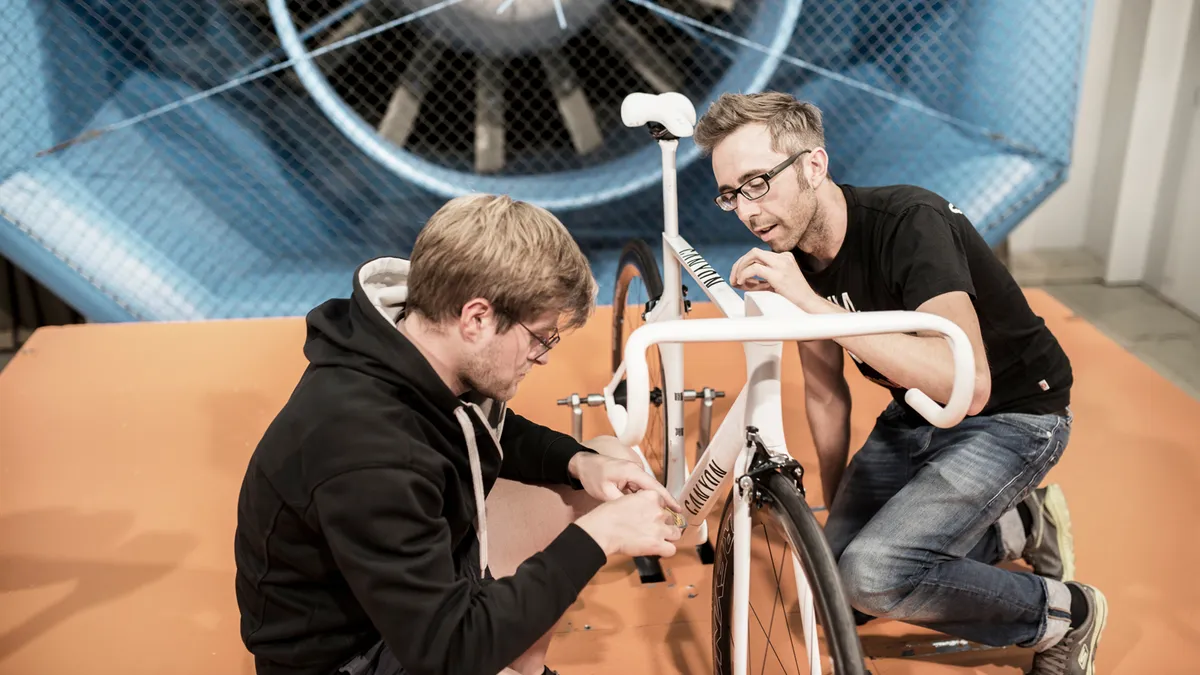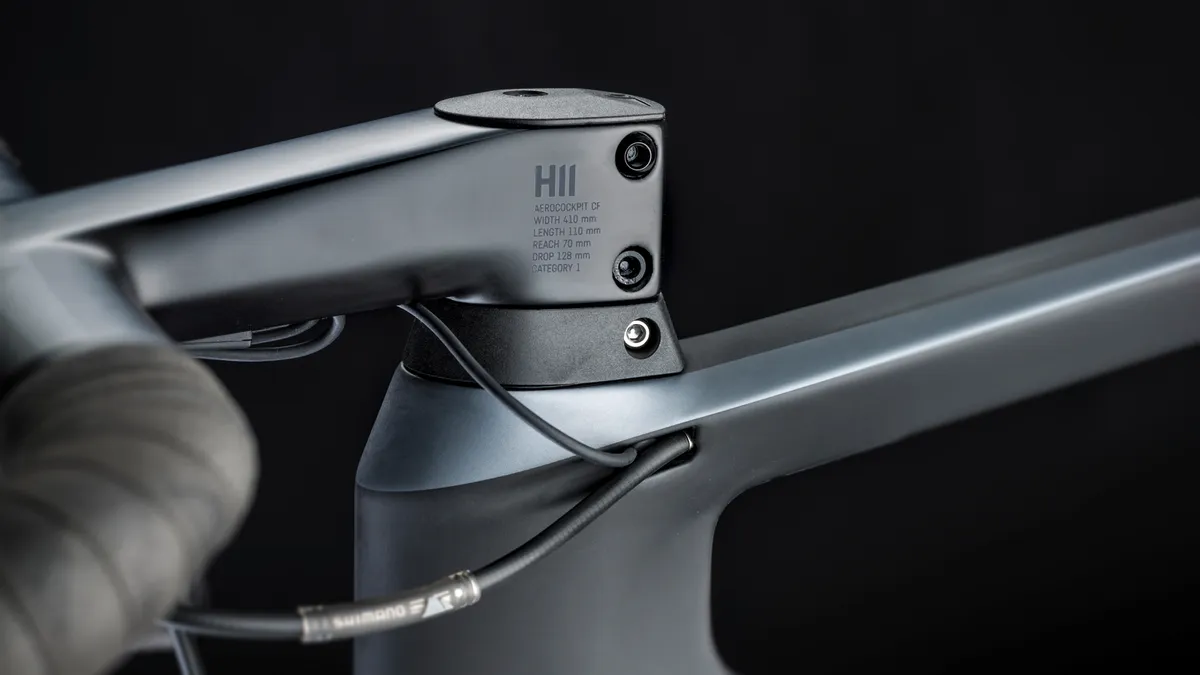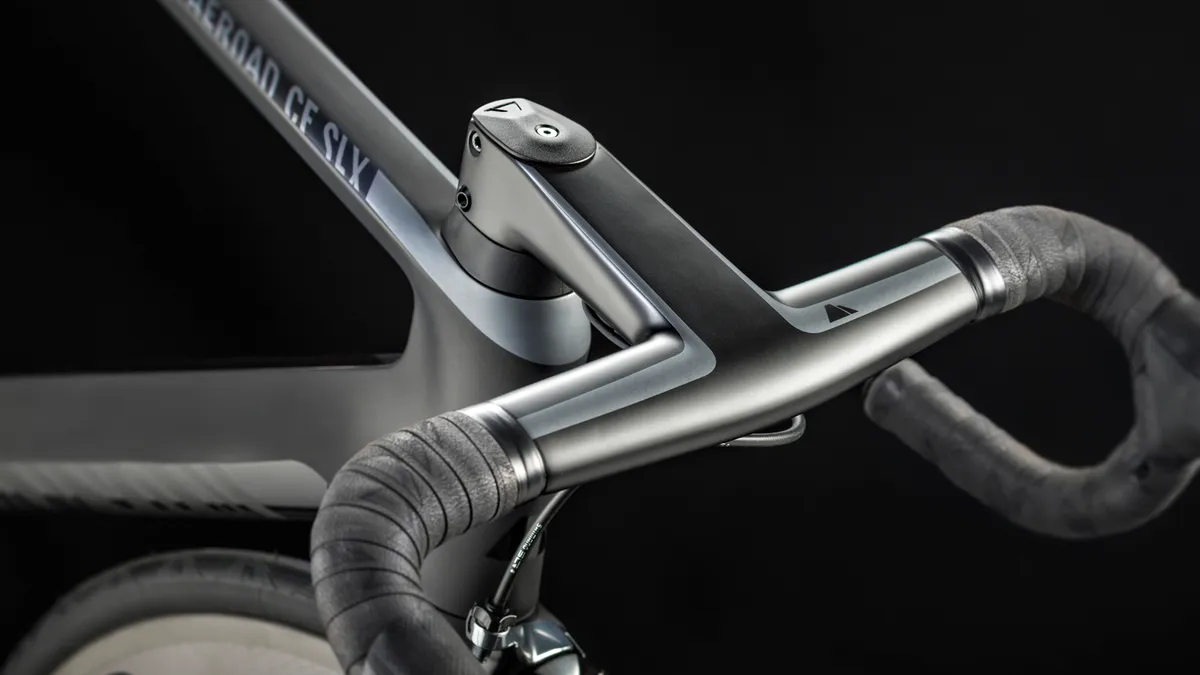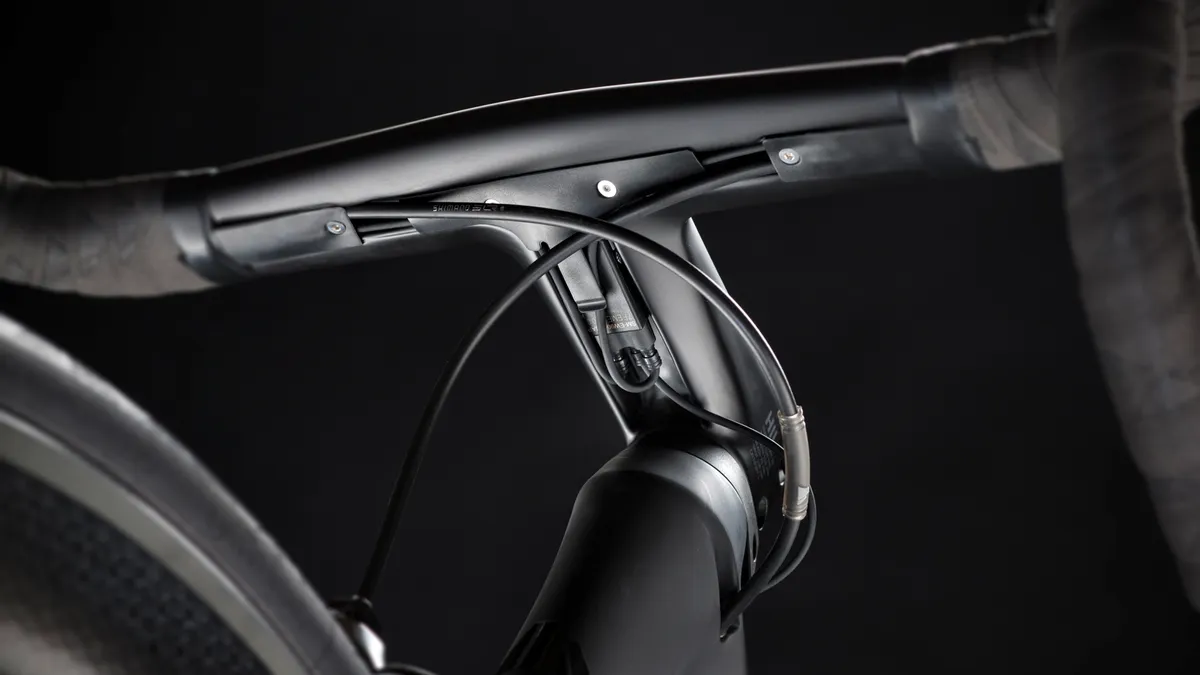Canyon's original Aeroad is arguably one of the most successful racing bikes of recent years. It was the top ranked UCI point scoring bike in 2011 (Gilbert) and 2012/13 (Rodriguez) so designing its replacement came with a weight of responsibility. The new Canyon Aeroad CF SLX was launched at the start of the 2014 Tour de France.
See also: Trofimov Canyon Aeroad CF SLX
Fast looks
Canyon made a three-pronged attack on the redesign, incorporating cosmetics, aerodynamics and structural design. It is perhaps indicative of crucial priorities for bike brands in an increasingly crowded market that Canyon led its presentation by talking about the aesthetic elements.
Artefakt is an external design house that has won Red Dot design awards for its previous work with Canyon, and is responsible for the new Aeroad. This primarily revolves around parallel seatstays and down tube to give the bike simpler looks.
The paintwork also includes 'shadow' sections on the lower wheel-hugger section of the seat tube and the underside of the down tube to accentuate the parallel sections. The result is a particularly clean-looking chassis that has won Canyon the highest 'Best of the best' accolade from the Red Dot judges.
Yaws truly
Looking fast isn't always the same as going fast though, which is where Canyon's product development engineer and chief aerodynamicist Michael Adomiet and a whole lot of wind tunnel time comes in.

The Aeroad CF SLX underwent a lot of wind tunnel testing
Like most contemporary aero designers, Canyon was quick to point out that the Aeroad CF SLX had been designed to be drag-efficient in as wide a range of practical yaw angles as possible. That meant all the CFD (Computational Fluid Dynamics – essentially software-based streamlining) work was based on a 10kph slower average speed than the Speedmax TT bike, but across a broader spectrum of wind angles.
The average was then weighted to prioritise the most common wind angles to produce Canyon’s yaw angle weight distribution, which they used to set a target figure of five watts more efficient than the existing Aeroad frame.
Fast back
While Canyon was keen to stress the Trident 2.0 tube section isn’t a virtual airfoil or Kammtail design, it is quite clearly a broad airfoil section with a blunt back. It’s used for the down tube, the upper seat tube and the seatpost and produces a very similar CFD pattern to those we’ve seen presented by other brands such as Scott and Trek. The average chord width is a 2.6:1 ratio rather than the UCI limit 3:1 of the Speedmax frame, although some sections, the stays and wheel-hugger seat tube, for example, are at the UCI limit.
Canyon has sweated the details too, with combined brake and Di2 cable entry on the head tube flank and a front derailleur mount Di2 cable exit that saves a claimed 0.2 watts over a bottom bracket exit cable.

On the electric shift specific frame option, the Di2 cable and rear brake cable share the same entry port for optimum aerodynamics
You won’t find a chainstay-mounted rear brake though, and not just because Canyon ”doesn't want to kill the mechanic leaning out of the car”. Its testing showed the added frontal area costs 4W of drag at the benchmark 40kph speed and so the new Aeroad uses conventionally sited direct-mount brakes.
For the maximum frame-shrouding effect Canyon uses a front calliper (with rear brake pads) at the rear of the bike as well as the front. Add a flush fit seatpost wedge clamp and the new Aeroad is more aero than the old model even with two bottles on, posting a 13 watt (19 percent) frameset drag reduction without a rider.
Speed up the rider, speed up the bike
Canyon claims to have gained another 5.5-watt advantage from their monocoque Aerocockpit CF too. The single-piece stem and bar uses a flat bar top to minimise frontal area with a step-down so that tape stays flush to the bare bar. The underside also uses a trough and cover design to keep cables out of the wind while the Di2 junction box disappears into a cavity on the underside of the stem.
The ‘stem’ sits above the line of the top tube rather than being flush which allows use of a conventional cockpit (as we’ve already seen on some Katusha bikes) but you do get elongated steerer spacers to smooth airflow round the neck.

Canyon's go faster flagship certainly looks fast and it's already won a top accolade from the Red Dot Euro design judges
Wind tunnel research by the German magazine Tour also pointed to significant gains (25 watts for a 2cm width reduction) just by narrowing the handlebar width. That means all five lengths of the Aerocockpit units, from 90 to 130mm, are each offered in two different widths which are 10mm narrower than normal sizes. For example, the 90mm reach unit is offered in 390mm (not 400mm) and 410mm (not 420mm), while the 130mm is offered in 410 or 430mm options (rather than 420 and 440mm). Otherwise the geometry has been left alone as it was widely praised by professional and recreational riders.
To keep the ride as low and aero as possible the top tube lengths of each Aeroad correspond to the length of the next size up on the Ultimate CF SLX. Fit options are increased though, thanks to a new XXS Asian size and 0 or 15mm (standard) and 15 or 30mm (pro rider and sportive) flippable head offset options on the seatpost. The D shaped 35x22mm seat post is also designed to flex more than a deeper aero post to add an element of ‘suspension’ to the rear of the bike.
Fatter is stiffer
Aerodynamics is not everything though. Having commented on a vague front-to-rear connection in our own testing we’re not surprised Canyon’s Pro riders wanted a stiffer, lighter bike than the original Aeroad too. That’s resulted in the new Aeroad using the same oversized 1.25in headset as the Ultimate CF SLX with a shaped bow and custom super slim Acros headset bearings to compensate for the width aerodynamically.
Canyon also concentrated a lot of wind tunnel time on adding 3D-printed shrouds onto the down tube to see how wide it could make it without increasing drag. “A very strong down tube is like the Achilles tendon of the bike," design engineer Wolfgang Kohl said. "We were surprised to see how wide we could go with the down tube before we lost 100nm per degree stiffness at the head tube.”
Due to the front wheel slowing down airflow dramatically in front of the tube Canyon were able to go far wider than the previous skinny ellipse tube and gained an 11 percent increase in stiffness as a result. Rather than just using single-section static testing Canyon also used a iBike Newton+ computer for on bike comparison of speed vs opposing forces to arrive at an overall power loss/stiffness figure.
Despite the increased stiffness, tube size and wheel-hugger fin, the 56cm frame weight comes in at 960g, 40g under the 1,000g weight of the previous Aeroad.You don’t get the ‘Shift Rake' adjustable fork dropouts of the original Aeroad though, and there wasn't any mention of VCLS basalt enriched composite to absorb shock either.
While the flagship Zipp 808 equipped bike represents the optimum equipment mix for flattering the frame and cockpit, it’s good to hear that the design team have input on specification as far as possible.
Sebastien, the product manager, also has a big interest in the wind tunnel testing so that complete bikes are drag optimised as far down the price range as possible. What that price range will be is yet to be confirmed, but we presume that Canyon pricing will be as aggressive as usual due to their direct-selling model.
With the steering issues that dogged our experience of the first generation bike seemingly sorted we’re very keen to get a first ride as soon as possible too so watch this space to see our Onroad Aeroad feedback later in the year.





